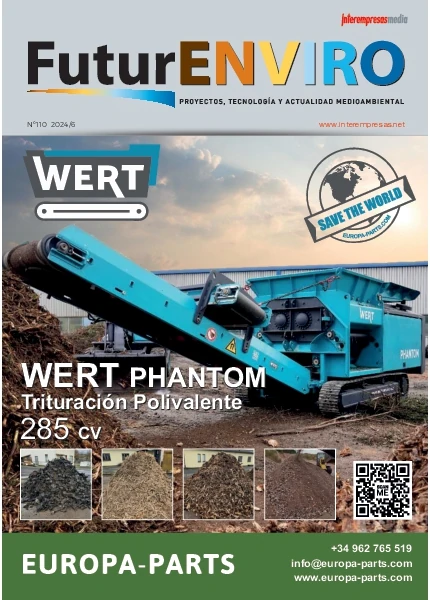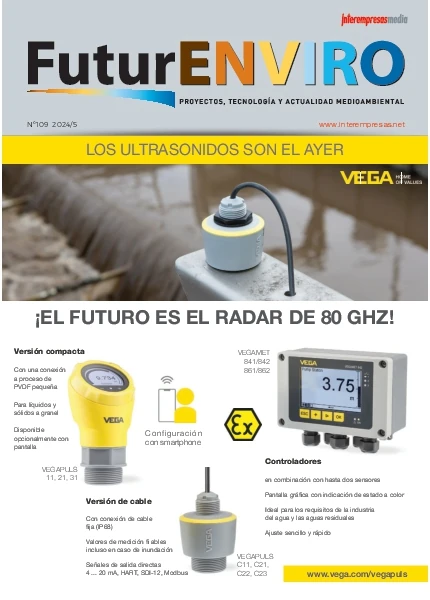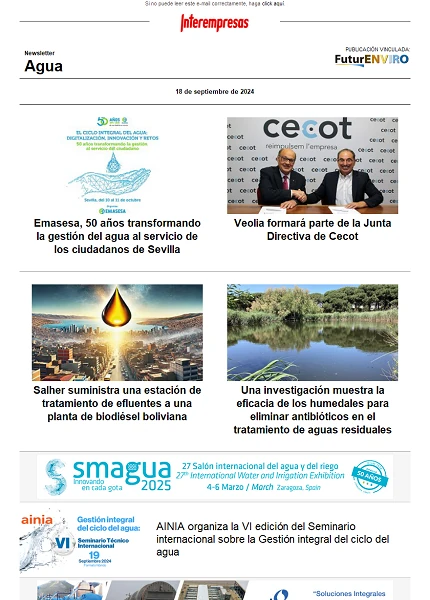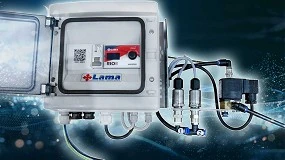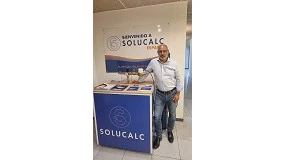Estudio de descontaminación de aguas residuales de una empresa de transformados metálicos
Universidad Politécnica de Valencia15/09/2004

Se inició el trabajo haciendo un examen detallado de todos los procesos de fabricación susceptibles de producir vertidos contaminantes, localizando en cada uno de ellos los puntos de origen de la contaminación, así como el carácter de la misma. Se cuantificaron todos los caudales independientes. Se puso especial cuidado y rigor en esta etapa del trabajo, asumiendo que para el diseño de un tratamiento de descontaminación es imprescindible un conocimiento profundo de los procesos de producción.
De la realización del proceso productivo se genera un vertido proveniente de los enjuagues de decapado ácido, vibros y pavonado, dando lugar a un vertido ácido con alta carga en metales pesados como cobre, zinc, níquel y plomo procedentes de la materia prima empleada, latón.
- Cobre 57-70 %
- Zinc 36-40 %
- Níquel 1.5-3 %
El alto contenido en estos metales hace que el efluente resultante no cumpla con lo especificado en la legislación vigente para ser vertido, por lo que crea la necesidad de implantar un sistema físico-químico para mejorar la calidad de dicho efluente a valores admisibles para ser vertido.
Por otro lado, la empresa dispone de un baño de desengrase ultrasonidos que, por su alto contenido en aceite, no es posible tratar junto con el resto de efluentes, por lo que es necesario aplicar otro tratamiento de depuración a dicho baño.
Todas las aguas procedentes de la actividad industrial son canalizadas junto con las aguas domésticas para ser posteriormente vertidas a la red de alcantarillado público a través de la arqueta de registro.
El volumen total de vertido discontinuo concentrado de carácter básico procedente del desengrase de ultrasonidos es de alrededor de 11.000 litros al año, situándonos en el caso más desfavorable.
El volumen total de vertido continuo procedente de los enjuagues con carácter básico, ácido y halogenado dependiendo de la sección a la que se refiera, es de 183.920 litros al año, obteniendo así un volumen total de vertido de 194.920 l/año, es decir, 886 l/día.
A partir del estudio realizado en este informe, se aconseja a la empresa que regule sus condiciones de vertido de aguas industriales. Para su gestión, atendiendo a los problemas sobre vertidos que actualmente presenta la empresa, se considera el verter al alcantarillado municipal la alternativa más idónea, ya que de este modo se evita gastos adicionales como el transporte del agua residual a gestor o hasta una EDAR externa, y permite así llevar a cabo las estrategias de crecimiento de la empresa sin costes demasiado elevados.
Técnicas de minimización de residuos
- Concentraciones de cobre y zinc
- pH
- Nitratos
Por tanto, los objetivos de las medidas correctoras que apliquemos sobre los vertidos líquidos deben de ser:
- Reducir las concentraciones de los parámetros característicos de los vertidos a límites que no sean perjudiciales para el medioambiente y que se ajusten a los límites normalizados.
- Minimizar al máximo la posible producción de residuos en el tratamiento de los vertidos.
- Asegurar el mínimo coste de mantenimiento de las instalaciones de tratamiento de los vertidos.
Para la consecución de estos objetivos, se propone el diseño de un tratamiento físico-químico de todos los vertidos descritos en apartados anteriores, con el fin de depurar las aguas residuales procedentes de la sección correspondiente antes de su vertido, de tal forma que sus parámetros característicos no sean perjudiciales para el medio ambiente y se ajusten a los límites que se establecen en la normativa.
No obstante, el procedimiento físico-químico no es capaz de eliminar por sí mismo los nitratos de las aguas residuales. La razón reside en el rango de pH de trabajo. Los nitratos presentan un grado de solubilidad muy elevado, por lo que difícilmente un método de eliminación basado en la precipitación de los iones formando sales, como es el tratamiento físico-químico convencional, no será efectivo. Por esto hay que recurrir a otros métodos de eliminación como pudiera ser el intercambio iónico o la osmosis inversa.
A continuación, citaremos cada una de las medidas correctoras propuestas y las describiremos detalladamente.
Minimización de los efluentes procedentes del enjuague corriente de la sección de decapado/desbarnizado
Como la legislación vigente prohíbe totalmente el vertido de efluentes que puedan tener restos de disolvente halogenados, dicha etapa del proceso de producción debe ser modificada para cumplir con las reglamentaciones exigidas.
Esta modificación consistirá en convertir el enjuague corriente en un enjuague estanco, se colocará un bastidor sobre el baño de desbarnizado donde se colgarán las piezas desbarnizadas para que escurran la película de baño adherida.
De este modo, se minimizarán las perdidas de disolvente por goteo y se mantendrá el enjuague estanco limpio durante más tiempo.
Cuando el enjuague esté lo suficientemente contaminado y no pueda realizar adecuadamente su función, entonces deberá ser gestionado a través de un gestor autorizado.
Minimización de los efluentes procedentes del baño de desengrase ultrasonidos
Como el baño tiene pérdidas por evaporación, se realizan adiciones para mantener el nivel; sin embargo, con el tiempo el baño se llena de lodo procedente de los restos de pasta de pulido y de aceite; mermando su capacidad de limpieza, por lo que resulta necesaria su renovación completa. El baño agotado no puede ser vertido ni tratado en una depuradora físico-química por su alto contenido en aceite, siendo necesaria su gestión.
Una vez agotado el baño, en vez de llevarlo a gestionar, éste puede ser tratado mediante la técnica de rotura ácida, que consiste en el desemulsionamiento del aceite contenido en el baño de desengrase agotado basándose en el hecho de que la mayoría de los agentes emulsionantes, tales como jabones y detergentes, son menos efectivos en la estabilización de emulsiones aceite-agua a pH’s bajos.
La rotura ácida, junto con el uso de cationes polivalentes hidrolizables como el Fe3+, puede utilizarse no sólo para la desestabilización de emulsiones, sino que en su hidrólisis proporciona un efecto de adsorción y arrastre por parte de los flóculos que forman.
La instalación estará constituida por un decantador cónico con una llave en la base del decantador para la salida de aceites y de clarificado.

Minimización del contenido de metales pesados en las aguas residuales
Se propone un tratamiento integrado de todos los vertidos anteriores, (excepto el de la sección de decapado/desbarnizado para el que ya se ha descrito la tecnología de minimización), consistente en un tratamiento físico-químico convencional.
El caudal de agua a ser tratado es el factor que en mayor medida determina las dimensiones de la instalación. De este modo, se ha diseñado la instalación para tratar en discontinuo un volumen de agua industrial de 2.000 litros por carga.
El tratamiento físico-químico de las aguas residuales está constituido por una serie de procesos unitarios usados extensamente en la industria y que han demostrado su eficacia en gran número de operaciones de aguas procedentes de las industrias de tratamiento de superficies.
En la instalación destinada para esta depuración se tratarán efluentes diluidos y concentrados, de carácter ácido y básico.
La instalación consiste, fundamentalmente, en el ajuste del pH o neutralización de las aguas residuales con los siguientes objetivos:
- La neutralización debe transformar los metales pesados disueltos en hidróxidos metálicos poco solubles o en sales básicas, de modo que puedan ser eliminados de las aguas.
- El ajuste final del pH para adecuarlo a los valores que marca la legislación.
Estos dos objetivos no pueden satisfacerse la mayor parte de las veces de forma simultánea y completa, de tal modo que es preciso llegar a soluciones de compromiso. Si el pH presenta desviaciones importantes con respecto a la neutralidad (pH=7) los seres vivos presentes en el agua, tanto vegetales como animales, sufren graves lesiones o mueren. Por regla general, las desviaciones hacia pH´s altos, mientras se ciñan a ciertos valores, son menos peligrosas que las desviaciones hacia pH´s bajos. Es por ello que, teniendo en cuenta la necesaria precipitación de los hidróxidos metálicos, las aguas residuales deben ser siempre ajustadas a un pH ligeramente alcalino, en la zona de pH comprendida entre 8.5 y 9.0, aunque la legislación permite vertidos a la red de alcantarillado de hasta 9.5 de valor de pH.
El hecho de que un metal pueda ser precipitado no implica que el problema de su eliminación haya quedado totalmente resuelto. Los hidróxidos de determinados metales pesados forman soluciones coloidales que no son decantables ni filtrables. Este estado coloidal puede ser desestabilizado por la adición de coagulantes, los cuales neutralizan la carga superficial de los coloides, permitiendo su unión en grandes flóculos decantables.
Para facilitar el crecimiento y engrosamiento de los flóculos sedimentables, se adicionan sustancias floculantes. Estos floculantes son polielectrolitos aniónicos o catiónicos de alto peso molecular, los cuales están constituidos por largas cadenas orgánicas con gran número de centros activos. Las largas cadenas orgánicas actúan de puente entre distintas partículas formando grandes aglomerados, fácilmente visibles, que decantan a una velocidad razonable.
La decantación se logra haciendo circular el fluido por un sedimentador vertical donde la velocidad ascensional del efluente es inferior a la velocidad de sedimentación de los flóculos. En el fondo del sedimentador se van depositando los lodos, los cuales son evacuados periódicamente y conducidos a un depósito de almacenaje y espesado de lodos. Por la parte superior del sedimentador sale el agua ya clarificada y depurada.
En la operación de tratamientos de fangos, se incrementa el porcentaje en peso de sólidos de los fangos mediante deshidratación mecánica. Las razones por las que es interesante reducir al máximo el contenido de agua en los lodos, son facilitar la manipulación del fango y, por otro lado, reducir en volumen el residuo que tiene que ser evacuado, máxime cuando es un residuo tóxico y peligroso de elevados costes de gestión.
Minimización de los nitratos en las aguas residuales
Este tratamiento consiste en la eliminación de los iones nitrato mediante un equipo de intercambio iónico equipado con resinas selectivas de nitratos. Este equipo eliminará única y exclusivamente este tipo de iones.
El equipo de intercambio iónico habrá de ser regenerado de forma periódica a fin de conseguir la recuperación de la capacidad de eliminación de estos iones por parte de las resinas. El efluente resultante de la regeneración de las resinas será eliminado mediante evaporación.
Minimización de los residuos procedentes de la etapa de mecanizado
Además de minimizar los efluentes líquidos, se recomiendan a la empresa una serie de buenas practicas durante el proceso de mecanizado, con el fin de reducir así los residuos posteriores a tratar. Algunas de estas medidas se citan a continuación:
- Siempre que sea posible tecnológicamente, se recomienda emplear los procesos en seco, ya que los residuos son más fácilmente valorizables. En caso de emplear procesos húmedos, será necesario tratar los efluentes, previo a su vertido.
- Posibilidad de recoger el polvo metálico para su posterior valorización.
- Todas las etapas son importantes, por lo que el control y seguimiento deben ser exhaustivos, como la etapa de tratamientos mecánicos propiamente dichas.
- De todos los distintos tipos de tratamientos mecánicos posibles, elegir el primero el que tecnológicamente se aplique a nuestra necesidad y, segundo, el que tenga un impacto ambiental mínimo.
- Procurar que no existan manchas de aceite ni de agua, para facilitar la valorización del vertido.
Clarificado y residuos generados
- Lodos de depuración que se gestionan.
- Restos de aceite procedentes de la rotura ácida que se gestionan.
- Aguas de regeneración de la columna de intercambio iónico que se llevan a sequedad por evaporación al aire con la finalidad de reducir la cantidad de lodo a gestionar.
También se considerarán como residuos que deben gestionarse los envases vacíos de reactivos, los trapos utilizados y todos los residuos sólidos.


